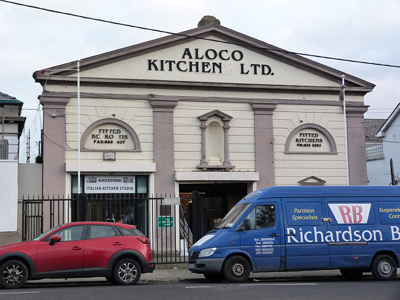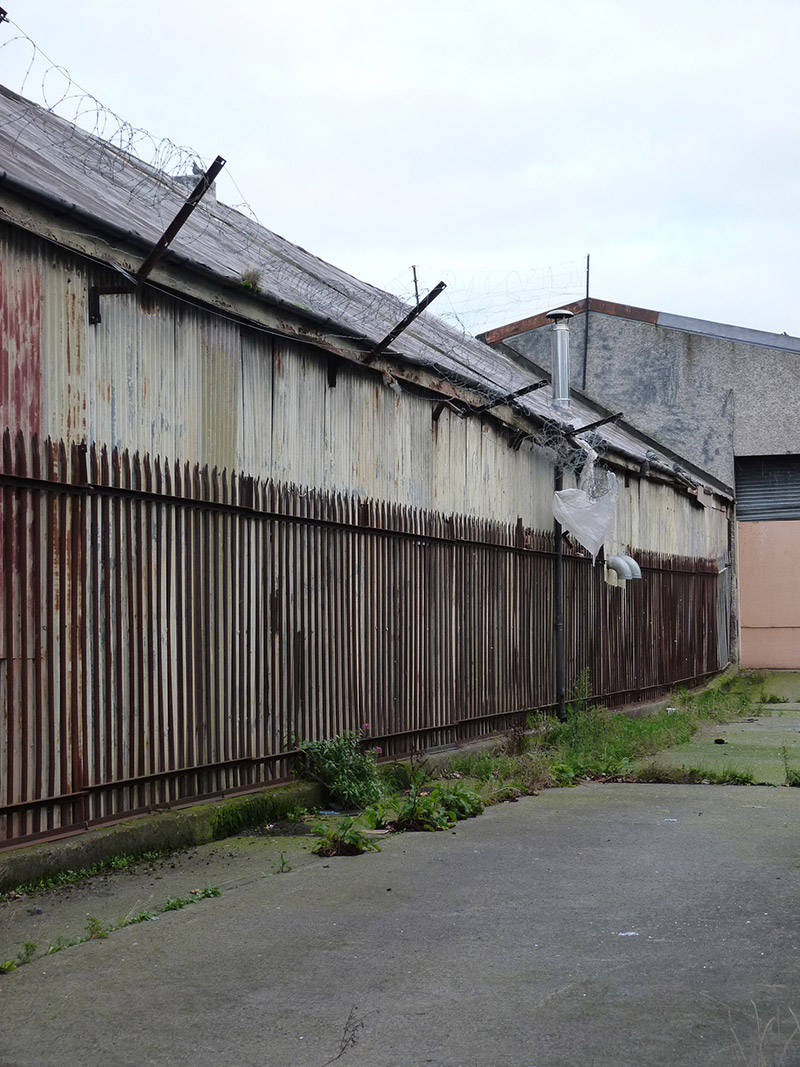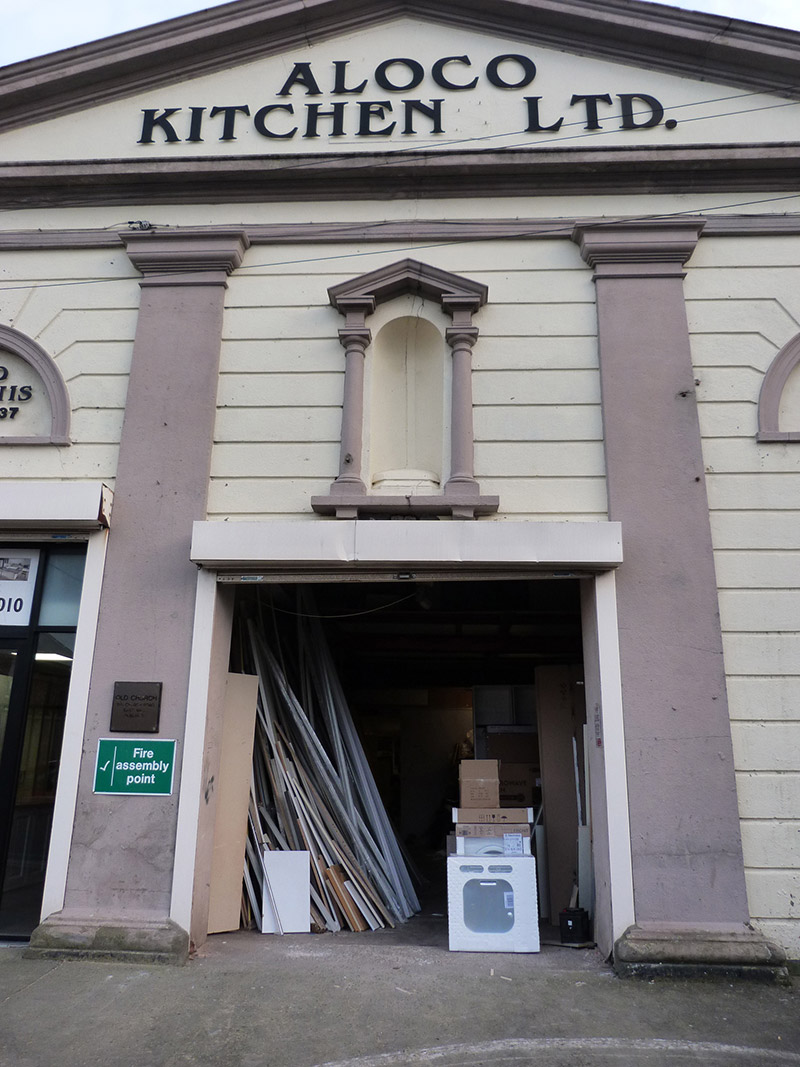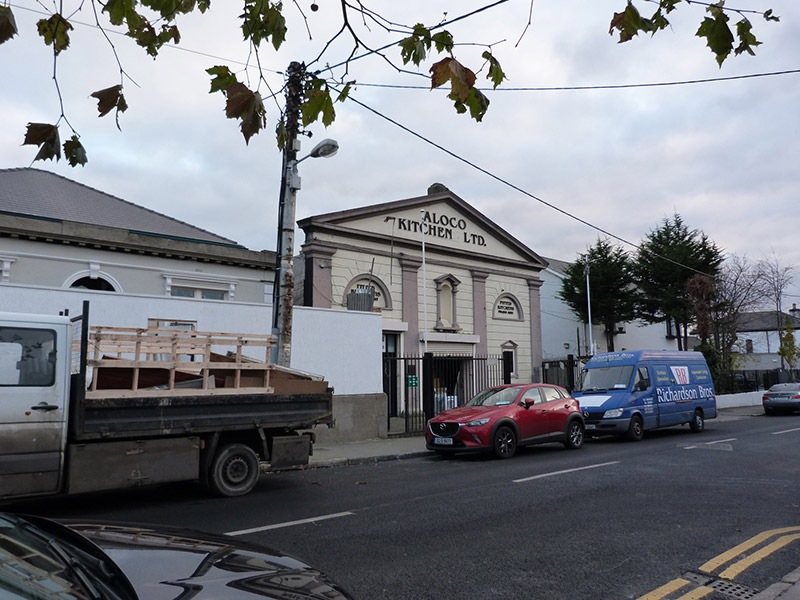Survey Data
Reg No
50120262
Rating
Regional
Categories of Special Interest
Architectural, Artistic, Social, Technical
Previous Name
St. Joseph's Church/The Tin Church
Original Use
Church/chapel
In Use As
Shop/retail outlet
Date
1915 - 1920
Coordinates
317654, 235386
Date Recorded
01/12/2017
Date Updated
--/--/--
Description
Freestanding gable-fronted former Catholic church, built 1919, with three-bay tetrastyle Doric frontage to northwest elevation. Now in use as retail outlet. Pitched corrugated-iron roof with timber eaves course. Channelled rendered walling to front elevation, having engaged Doric pilasters, supporting frieze and moulded render pediment with concrete plinth to apex; round-headed niche to upper part of middle bay with surround comprising engaged Doric colonnettes supporting open-bed pediment; corrugated-iron sheeting to side elevations on concrete plinth. Blind Diocletian openings to flanking front bays with moulded render architraves and concrete sills. Recent square-headed doorways with metal roller shutter to centre and glazed door to north end. Mild-steel railings and matching gate to street frontage.
Appraisal
The quality of the detailing to the front elevation of this former church is high, comprising a classically inspired frontage, the symmetry of which is emphasized by a pedimented facade. It contrasts with the remainder of the church, which is constructed of simple and utilitarian corrugated-iron cladding, giving St. Joseph's the local moniker of the 'Tin Church'. Built in the early twentieth century, the front was possibly designed by architect George Luke O'Connor, who drew up the plans for the neighbouring presbytery. A concrete plinth over the apex of the front gable may have served as a base for a cross finial. The building is an important historic focal point within a predominantly residential area, enriching and diversifying the architectural heritage of the streetscape. When the population of East Wall expanded in the mid-twentieth century this building was retained, but superseded by the larger masonry church further along Church Road.











